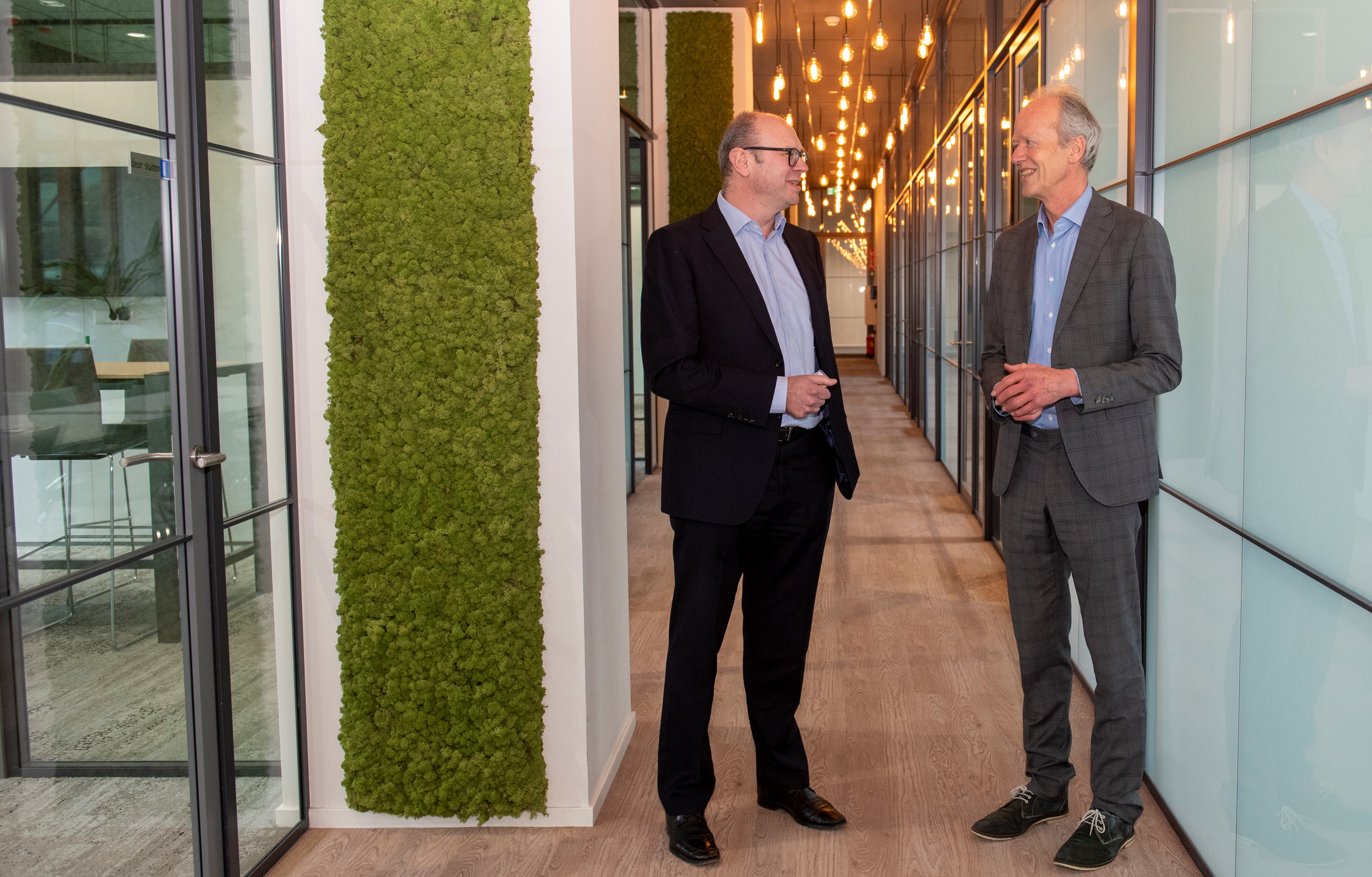In conversation with Bernard ter Haar and Koen Bogers
The Netherlands aims to be 100% climate neutral by 2050. To achieve that goal, the country needs a new energy system that covers the entire process, from generation, transmission and consumption through to energy storage. What is our plan? Koen Bogers, CEO of Stedin, discusses this topic with Bernard ter Haar, whose roles include that of chair of the 2050 Energy System Expert Team.

Looking back at 2022, Bernard describes it as the ‘year of energy’. ‘We worked hard on agreements between the central government and grid managers in view of the financing challenge ahead. We also talked to a lot of people about the energy system for 2050. Our provisional conclusion is that if we want to be climate neutral in that year, electricity will already have to be 100% sustainable by 2035. The entire energy system must be climate neutral by 2040, driven by electricity as the key engine of this transition and by far the most important energy carrier. But the system will still include hydrogen as an energy carrier by that time.’
Key engine
‘Electricity as the key engine’ - this, says Bernard, is the basis for our future energy system. But how realistic is 2035 as the target for completing the electrification project?
Koen: ‘It certainly calls for a significant acceleration of existing efforts. To be honest, I don’t expect us to be able to eliminate natural gas altogether within 12 years. Within the sector, the general idea is that 2050 is the year in which electrification will be completed. But to achieve the acceleration required, we need more of everything: more resources, more people, more materials and more room. And more awareness about its necessity.’
Support base
After all, support and awareness in society are crucial to achieve our goals. Bernard: ‘In our analyses we have identified three technical challenges compared with no fewer than seven social ones. Apart from concern about whether things will be ready in time, our major concern perhaps is how to maintain the required level of commitment over time.’ We are also dealing with a chicken and egg situation, says Koen, because nobody can predict the future: ‘Why should I opt for the heat grid as my source of energy if I’m not sure if this is the best choice for the future? Or why a heat pump? As long as there is no certainty, we tend to wait until the other moves and this results in delay.’ This, says Bernard, is exactly why we need to keep presenting the ultimate goal in very clear terms: ‘We want to achieve a cleaner world with less noise, less particulate matter and, eventually, more affordable energy.’
A fair transition
To really get people on board, a certain amount of pressure may be necessary, says Bernard. ‘Think of financial incentives to encourage people to use their washing machines when the sun is shining, rather than at night. We also attach great value to fairness, so that schemes do not only benefit the rich. We don’t want the energy transition to widen the gap between rich and poor.’ We need smart solutions. ‘One focus area, for example, is the housing association sector. This calls for an investment that benefits the residents, not the associations themselves. We should find ways of making that attractive.
Mutual advice
What advice do they give each other for 2023? Bernard’s advice to Koen: ‘Electrify as soon as possible. And be 100% transparent about what resources you need and how you spend them. The sooner the grid manager is able to move, the more this will help the energy transition.’ Koen calls for a comprehensive approach: ‘We need an approach that transcends the terms of office of individual governments. The energy transition is so urgent and its scope is so enormous that the entire system will have to be overhauled. An Energy Commissioner might help in this regard, analogous to our Delta Programme Commissioner for the National Delta Programme 2050. Such a long-term perspective will provide rest and focus.’ Koen also believes it is important to remember the ‘molecules’. In other words: gas. ‘It is logical to firmly prioritise electrification and that is exactly what we are doing, but we should bear in mind that natural gas will remain important, with an increasing share for green gas. Phasing out all natural gas by 2030 or even later may prove too much of a challenge, so we may also have to scale up green hydrogen.’
Old shoes
According to Koen, it makes no sense to build everything while we aren’t even sure yet what exactly we will need in the new situation. ‘In our role as grid manager we are sometimes criticised for moving too late or too slowly. But we have a good reason for that: you don’t want to build an 8-lane motorway and then find out that it wasn’t necessary. We do however want to connect everybody to the grid within a reasonable period and prevent congestion on the grid or at least deal with it flexibly. For that we need to make big steps forward and speed up grid expansion projects. We are already working much faster than previously, but hearing Bernard talk about 2035 I realise we need to go even faster.’ Could innovation help in this process? ‘I’m inclined to say “yes, but only to a limited extent”. It will take time to develop new technologies. We don’t have that time at the moment, so for now we’ll have to rely on existing technologies and scale them up.’ Bernard points out that scaling up will automatically generate innovations. ‘For example, consider the development of wind turbines in recent years. We’re only at the beginning of the transition. There is a lot more that is going to happen.’
Bernard ter Haar: chair of the 2050 Energy System Expert Team 2050
Koen Bogers: CEO of Stedin
